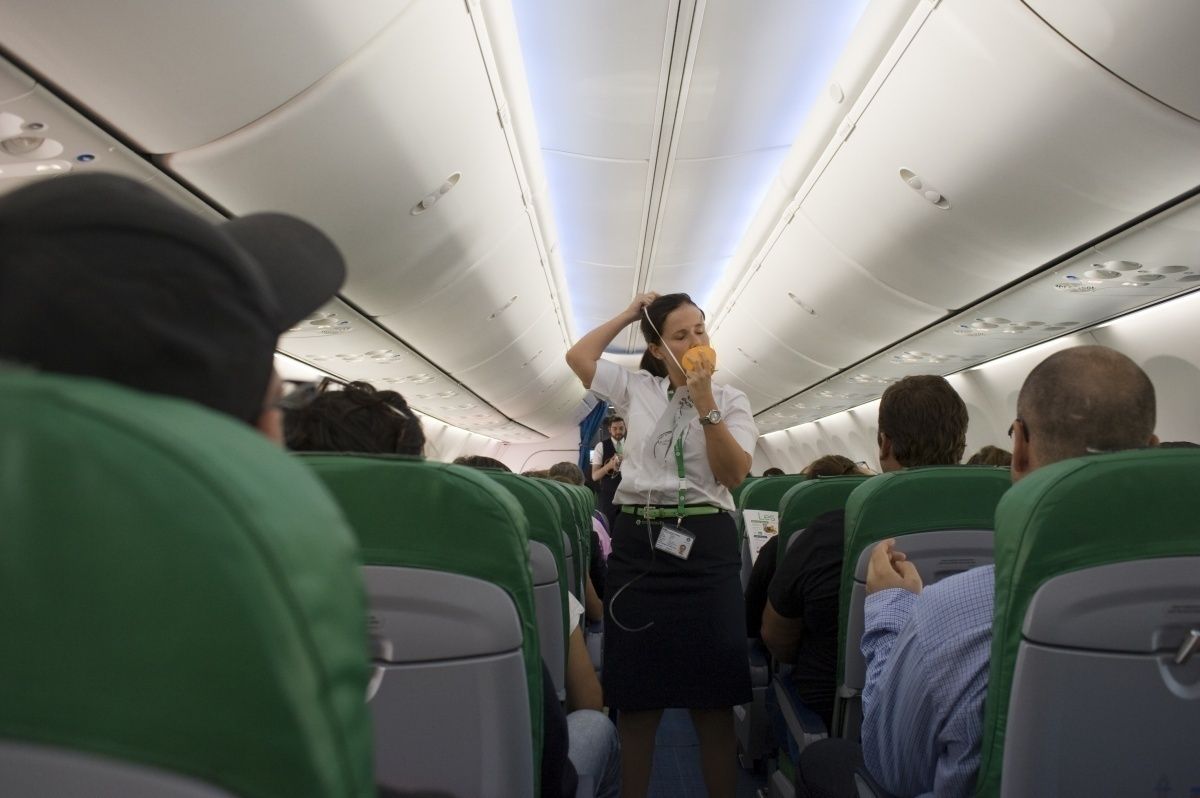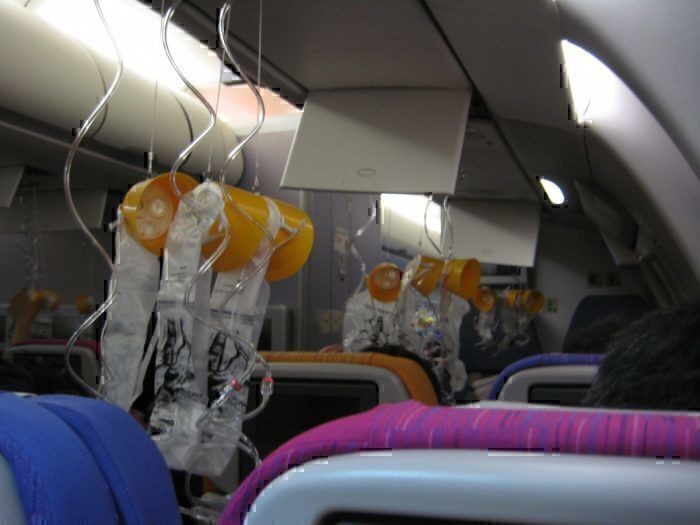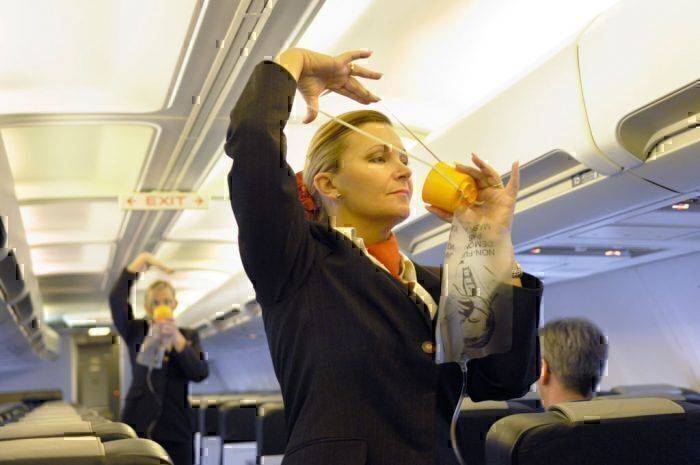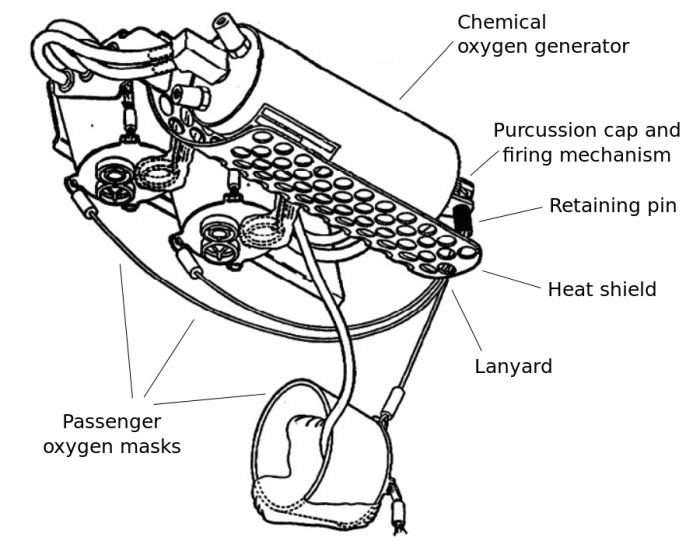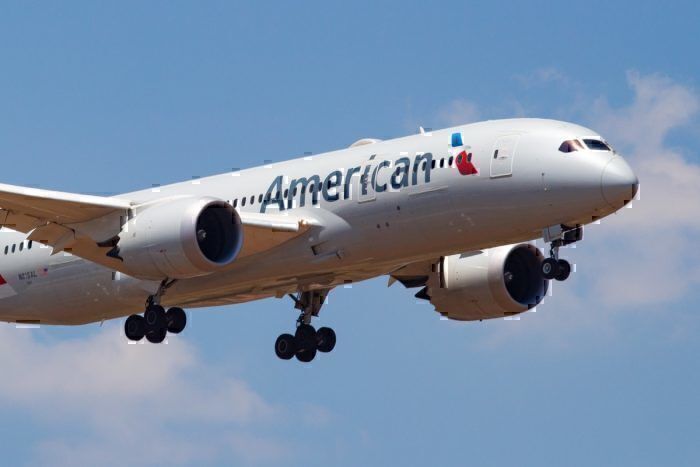**Update: 16/05/2019 @ 1130 UTC - added details of some aircraft types using oxygen cylinders or chemical generator systems**
We are all used to hearing the guidance for using oxygen masks as part of all flight safety briefings. Few of us, though, fortunately, have ever had to use one. This article takes a look at how they work and where all that oxygen comes from.
Masks will automatically drop
You will no doubt recall from safety briefings that ‘masks will automatically drop from the panel above you.’ And they will. Any cabin depressurization above a certain altitude (usually around 14,000 feet) will cause the panels of the chambers containing the masks to automatically open, and the masks to drop down. This can, of course, be done manually by the cockpit crew as well.
Masks will drop above every row of seats, as well as in toilets and the galley areas. Interestingly, there are usually more masks per row that seats, to provide extra masks for infants in the row, or passengers or crew in the aisle. Masks need to be applied quickly, before hypoxia or unconsciousness sets in, so you wouldn’t want to be looking around for one.
Oxygen will flow – but where does it come from?
Most aircraft have the same style mask. This is a yellow silicone facial cup, secured with elastic straps to the face. These bands can be tightened with loops in the elastic close to the cup. There is an attached bag, but this will not fill with oxygen; that flows directly to the mask.
Pulling the mask towards you will indeed start the flow of oxygen. But what oxygen? This can come from onboard oxygen tanks (as you might expect). But many aircraft instead use a chemical oxygen generator system. This produces oxygen when started, generally within each compartment for all attached masks, and has the advantage of being much lighter than tanks.
Different aircraft use different systems. The Boeing 747, 777, and 787, for example, all have oxygen cylinders. The Boeing 767 and Airbus A320 family we know use chemical generators.
With the chemical generation system, the action of pulling the mask will start oxygen production. Usually, this works by mixing two contained chemicals, sodium perchlorate, and iron oxide. They will react/burn and generate the oxygen that flows to the masks. This is a hot chemical reaction – passengers will likely experience a burning smell as the flow is activated, and the containing compartment will get very hot.
Reliable but rarely used systems
Incidents of depressurization and using breathing systems are rare. Recent cases include a Qatar Airways A330 flying from Sialkot to Doha, and a United Airlines Boeing 787 flying between San Francisco and Amsterdam. The exact causes for these are not clear, but usually, this results from airframe damage during flight or on the ground (such as a leak at a window or door seal).
When used, the systems to date have been very reliable. There were concerns expressed recently about failures in the testing of new systems installed on the Boeing 787, but Boeing claim that these have been addressed.
Only for limited use
The oxygen supply is not designed for long term use, but would be more than sufficient to provide support until the plane descends to a lower altitude, and diverts to land. This, of course, is the standard procedure followed in a cabin depressurization.
Oxygen is needed if the cabin depressurizes at altitude. The lack of oxygen at high altitude causes a condition known as hypoxia - initially causing confusion, nausea, and headaches, but quickly leading to unconsciousness. Once a lower altitude is reached, passengers can breathe the air with high enough oxygen content.
Different system for the flight deck
The main cabin masks are the same for all passengers and cabin crew, but the flight deck crew will use a different system. Pilots have additional risks to be covered for, such as cockpit fumes.
They have larger masks, with flow regulators and inbuilt microphones. They usually are linked to a bottled oxygen source as well.

